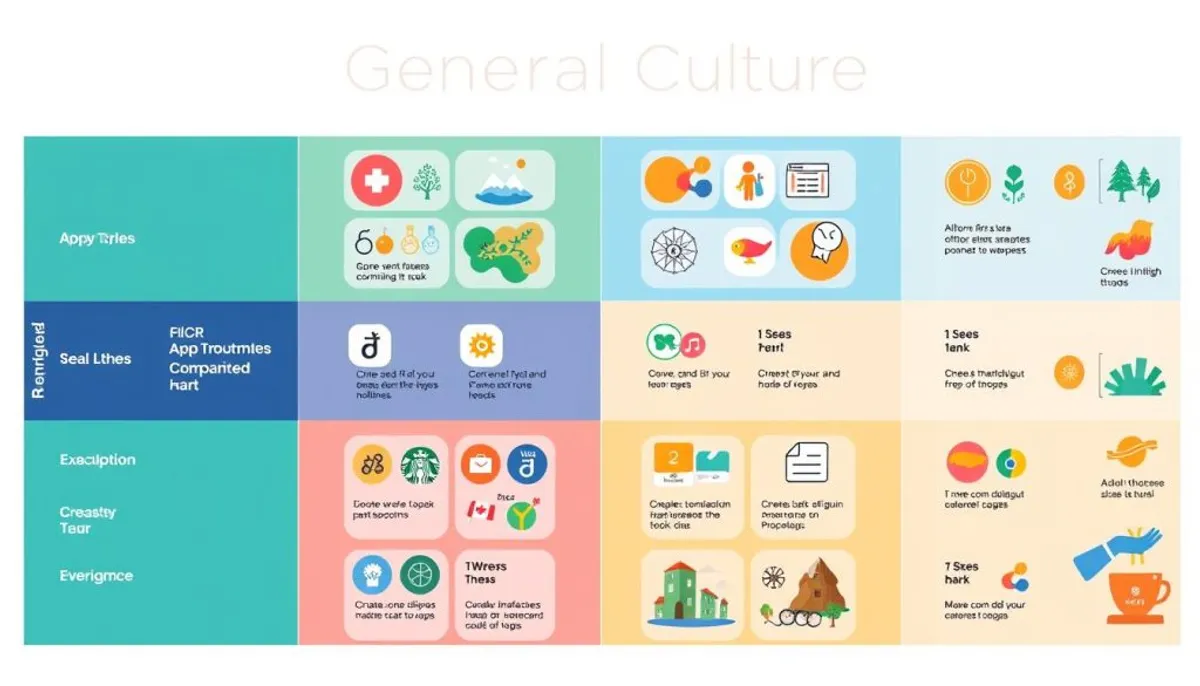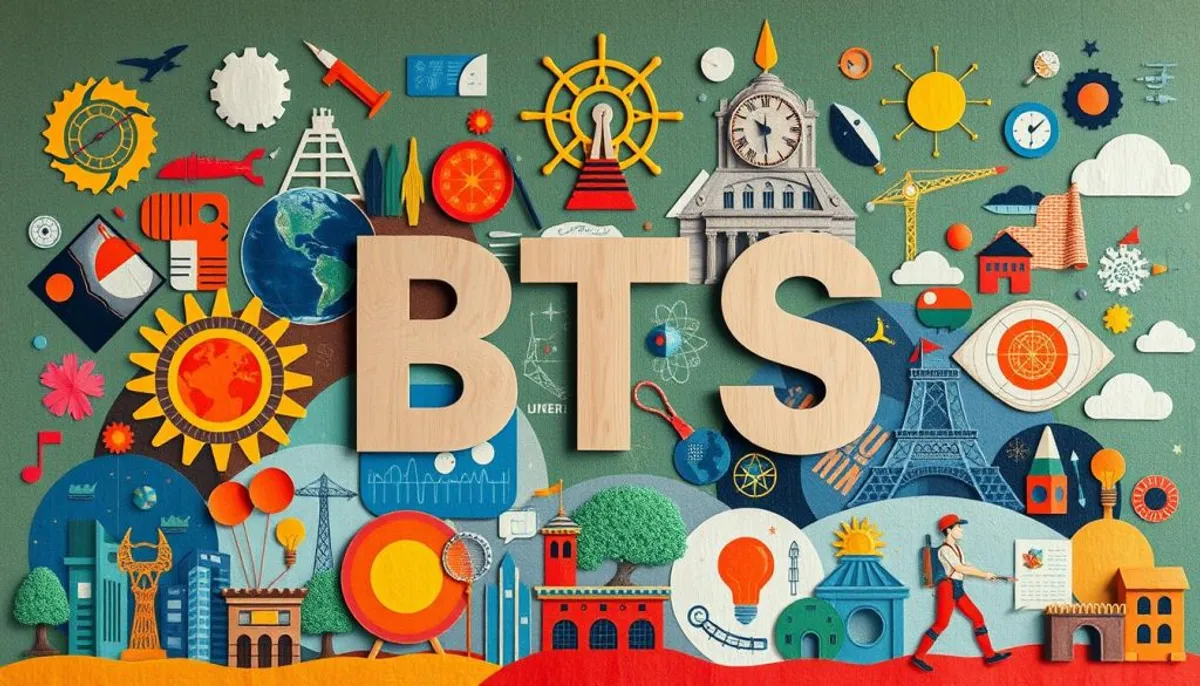The general culture exam in BTS is an essential pillar of the curriculum. With a coefficient of 3, it carries significant weight. This exam, lasting 4 hours, is divided into two parts: the synthesis of documents and personal writing.
The methodology plays a crucial role in the success of this exam. Students must master the comparative table technique to excel in the synthesis of documents, which is worth 40 points out of 60. Personal writing, on the other hand, represents 20 points.

The reform of the General Culture and expression exam, effective for students entering training in the 2023 school year, brings significant changes. The study theme in the second year will now be renewed each year, offering greater diversity in the topics covered.
To succeed, students must engage with the texts, develop their understanding, and enhance their writing skills. General culture and entrepreneurial creativity are also key aspects. Various resources, such as documentary films, are made available to enrich learning.
Introduction to general culture in BTS
General culture is essential in the BTS program. It aims to develop key skills for professional success. Emphasis is placed on analysis and written expression, which are crucial in the training.
The importance of general culture
General culture in BTS broadens horizons and sharpens students' critical thinking. It prepares them for professional challenges by enhancing their analytical and synthesis skills.
The educational objectives
The exam assesses students' ability to understand, analyze, and compare various documents. It tests their ability to produce a structured and reasoned personal reflection.

The coefficient and duration
The general culture exam in BTS is very important, with a coefficient of 3. It lasts 4 hours, allowing students to demonstrate their skills. The scoring is out of 60 points, divided between the synthesis of documents (40 points) and personal writing (20 points).
To succeed, students must master the methodology of synthesis and personal writing. It is advisable to dedicate time to analyzing the documents and developing a structured plan. The writing must be polished. The exam evaluates not only knowledge but also the ability to apply it coherently and thoughtfully.
Structure of the general culture exam
The general culture exam in BTS is divided into two distinct parts: the synthesis of documents and personal writing. This structure allows for the assessment of various essential skills for future professionals.
The synthesis of documents, scored out of 40 points, takes up the majority of the exam with a duration of 2h40. It requires in-depth analysis and a confrontation of ideas from multiple sources. Candidates must produce a text of 3 to 6 pages, organized into 2 or 3 main parts.
Personal writing, on the other hand, is scored out of 20 points and lasts 1h20. This part requires reflection on a question related to the studied theme. The paper must include an introduction, a structured development, and a conclusion summarizing the whole.
To succeed in these exams, a rigorous BTS methodology is essential. It includes effective time management, the construction of a coherent plan, and structured writing. Here is a summary table of the key elements of the exam:
| Part of the exam | Duration | Points | Structure |
|---|---|---|---|
| Synthesis of documents | 2h40 | 40 | 2-3 parts, 2-3 arguments per part |
| Personal writing | 1h20 | 20 | Introduction, development, conclusion |
Mastering this structure and applying an appropriate methodology are essential to excel in the BTS general culture exam.
Comparative table general culture BTS: Complete methodology
The synthesis of documents in BTS general culture requires a methodical approach. The confrontation table is an essential tool for excelling in this exam. It helps organize information effectively, thus saving valuable time while exploring the cultural spaces in Paris.
Construction of the confrontation table
The confrontation table has as many columns as there are documents in the corpus, plus one column for "Reflection Points." Each column is identified by the author and the type of document. For example, for the BTS exam in 2013 in Polynesia, authors like P. Assouline and N. Vanbremeersch were included, along with iconographic documents.
Organization of columns and rows
The structure of the table facilitates the comparative analysis of ideas. The rows represent the themes addressed, while the columns correspond to the different documents. This organization allows for a quick visualization of the convergences and divergences between authors, an essential element for a successful synthesis.

Effective filling technique
To fill the table, note the ideas concisely, one per cell, by rephrasing them. The synthesis method involves confronting ideas from the second document onward, noting similarities, oppositions, and novelties. This technique allows for the identification of authors' viewpoints and prepares for an in-depth analysis for the final writing.
| Step | Action | Objective |
|---|---|---|
| 1 | Identification of documents | Structure the table |
| 2 | Extraction of key ideas | Fill the columns |
| 3 | Confrontation of viewpoints | Prepare the comparative analysis |
Analysis and exploitation of source documents
The analysis of texts is crucial for excelling in the general culture exam in BTS. It requires careful and critical reading of various documents. Essay texts, often at the beginning, serve as a foundation to start your reflection.
Analytical reading of texts
It is essential to determine the genre of the text (explanatory, narrative, argumentative) and to identify the central ideas. News articles, for example, can take the form of columns or editorials, addressing current topics. Literary texts, on the other hand, feature characters in real contexts, with specific vocabulary that determines the theme.
Treatment of iconographic documents
The interpretation of images is also fundamental. Works of art require a careful analysis of compositional elements, such as framing and colors. Cartoons, related to current events, aim to be ironic and satirical. Advertisements, for their part, combine image and text to persuade or inform.
Identification of authors' viewpoints
A solid argumentation relies on understanding the authors' perspectives. For example, 48 documents highlight the importance of arrivisme, emphasizing the quest for success at the expense of morality. 32 documents address social segmentation, revealing societal divisions. These recurring themes are essential for developing a coherent and reasoned synthesis.
RelatedRelated articles


